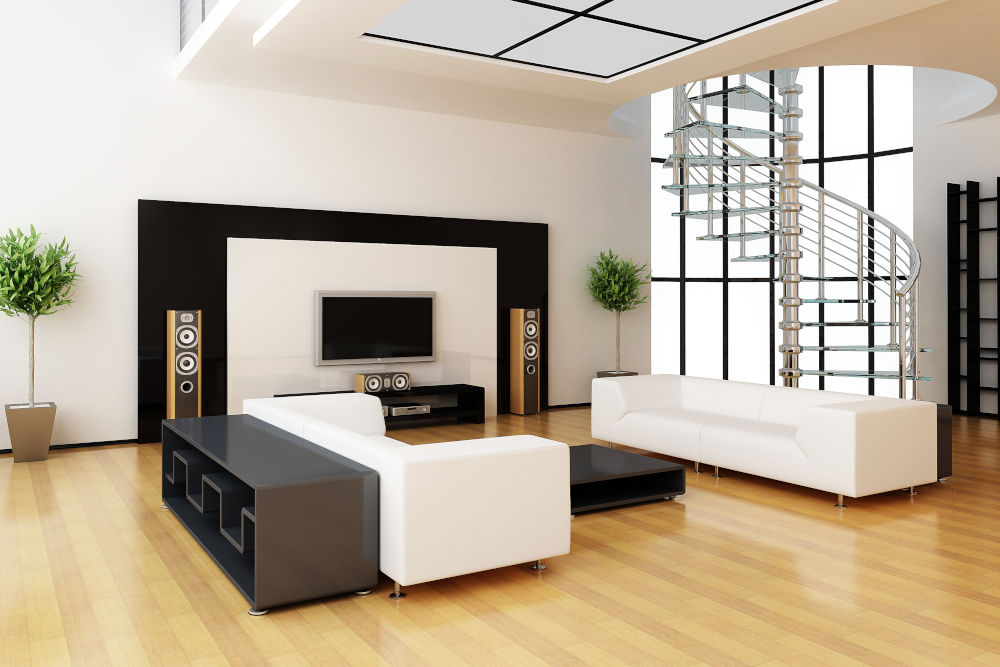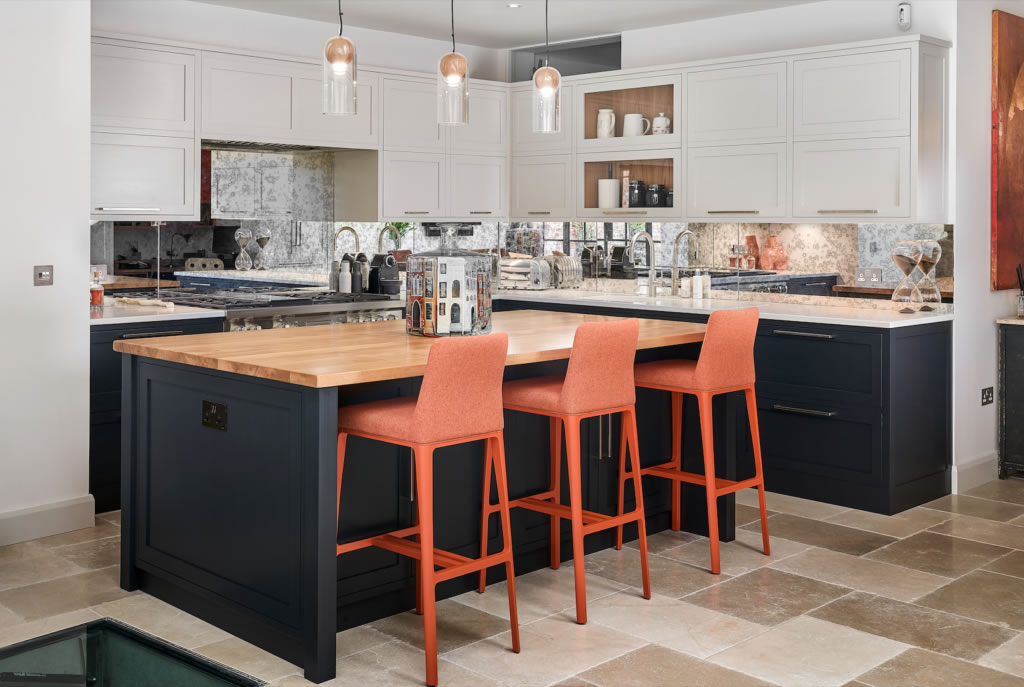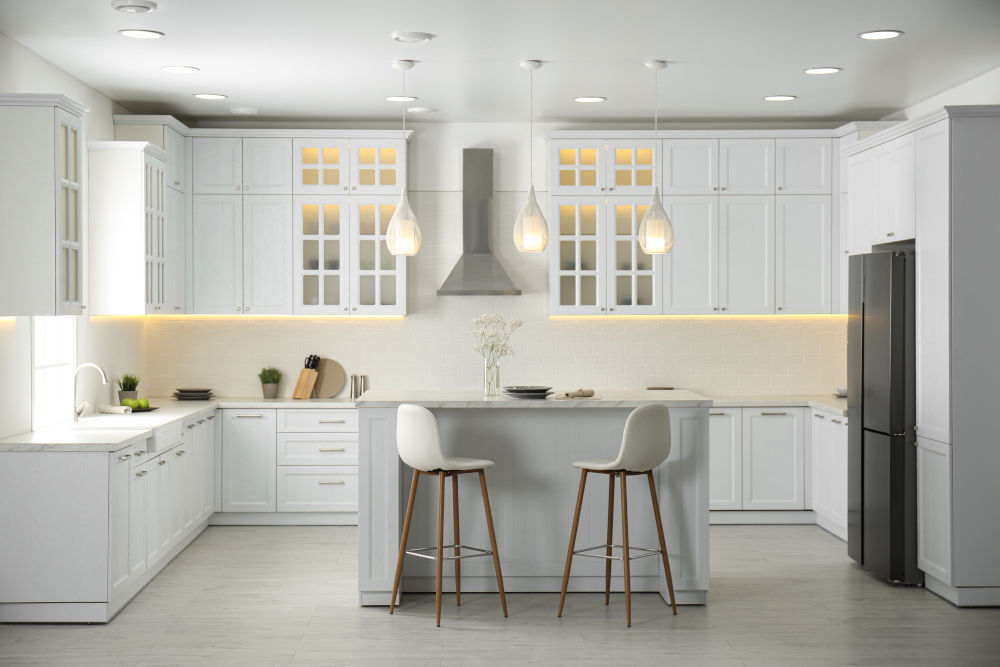As modern technology advances and more aspects of our daily lives become automated – thanks to Alexa, wireless charging and the various ‘can’t live without’ kitchen appliances – our homes are more online now than ever before. But having convenience at the touch of a button or a simple voice command can sometimes cause an unfortunate compromise on design. Unless your sense of interior style calls for clean, modern lines that showcase the latest tech, that is.
If your preference tends towards classic features, warm tones and a traditional aesthetic, here’s some guidance from Will Lyne, master designer and owner of luxury brand, Christopher Peters Kitchens and Interiors, on how to successfully integrate the latest technological appliances and devices in the home without taking away from the overall design.
Technology isn’t just for kitchens
There is often a misconception that the only suitable space for integrated technology is the kitchen or pantry, but it’s important to note that other key areas in the home could benefit from some top-tier tech – including the home office, living space and even the bathroom.

As our clients tend to favour more of a classic and traditional design, we work extremely hard to ensure our renovations are not only inviting and beautiful, but functional too. For instance, we will often incorporate wireless charging points into our designs, whether in a kitchen, living room or bedroom that the casual observer would have no idea existed.
We also encourage our clients to maximise storage opportunities in spaces where there is traditionally more of a need for technology – and the various cords and wires that come with it – so that computers, laptops and tablets can be hidden away when not in use. Adding a deep drawer to a desk for storing unsightly paperwork, pens and your computer means that, once it hits 5pm on Friday evening, these items can be stored away, and space becomes a welcoming, relaxing – yet functional – area once again.
Combine function and form without compromise
The trick to harmoniously combining high-quality tech with beautiful interior design is getting the balance right between function and form. Before attempting any major adaptions, sit down and work out what it is you want to be able to achieve in the space and how, in a perfect world, you’d like it to look.

If you’re thinking of installing a home cinema system, but still favour the classic aesthetic of a formal living space, my advice would be to invest in a bespoke unit or sideboard that houses the screen and technology system. Arrange your furniture to face towards the middle of the room, so as not to draw attention to the unit as the focal point – instead, use a low-level coffee table or ottoman to pull the eye towards the centre of the space.
Hidden from plain sight
Now, it goes without saying that the kitchen is the heart of the home – and the home for appliances and technology. In fact, we often find that the kitchen space is the natural place for the family computer or informal office area. But, understandably, a top-of-the-range oven, microwave and dishwasher – let alone a monitor and keyboard – could draw attention away from a country-style kitchen, so this is where creative integration solutions come in.
If your home allows, we would advise that modern cooking appliances, like ovens and microwaves, or home appliances, like coffee machines, kettles and toasters, are hidden from sight in a built-in pantry space. More traditional ovens, like AGAs or ranges, should take centre stage in the kitchen, so if you’re trying to evoke the ambience of a classic country design, then that should be the only appliance on view. And if you’re looking to add an office space to your kitchen, ensure the design of the desk surface and storage ties in with the rest of your units. Better yet, if possible, speak with a joiner about creating a bespoke unit that can be closed away when not in use.

Developing your dream integrated design
The only constant thing about technology is that it’s always changing. But by investing in top-tier tech that really fulfils your needs, having to update your appliances regularly becomes less of a concern. So, really take the time to evaluate what it is that you want the appliance or device to achieve for you.
Low-value items, like virtual assistants, can be replaced relatively regularly, but you want to feel safe in the knowledge that fridges, ovens and dishwashers will stand the test of time. This is especially true if you’re investing time and money into integrating them into a new kitchen design. Opt for appliances that are just as functional as they are beautiful. If your kitchen space is finished in cool, modern tones then chrome features would really complement the space. But if you’ve gone for creams and neutrals, perhaps invest in appliances in a corresponding colour. It’s all about seeing your appliances as the finishing touches to a beautiful design, and not simply a functional afterthought.
Integrated technology and beautiful design can sit side by side, without taking away from the function that you need the device to fulfil. Getting the balance right is simply about understanding what you need from the space and the feeling you want it to create. Still have questions about how to achieve both simultaneously? For a complimentary design meeting with our in-house team, visit the Christopher Peters website.
The post Function and form: How to successfully combine integrated tech and classic design in the home first appeared on Luxury Lifestyle Magazine.